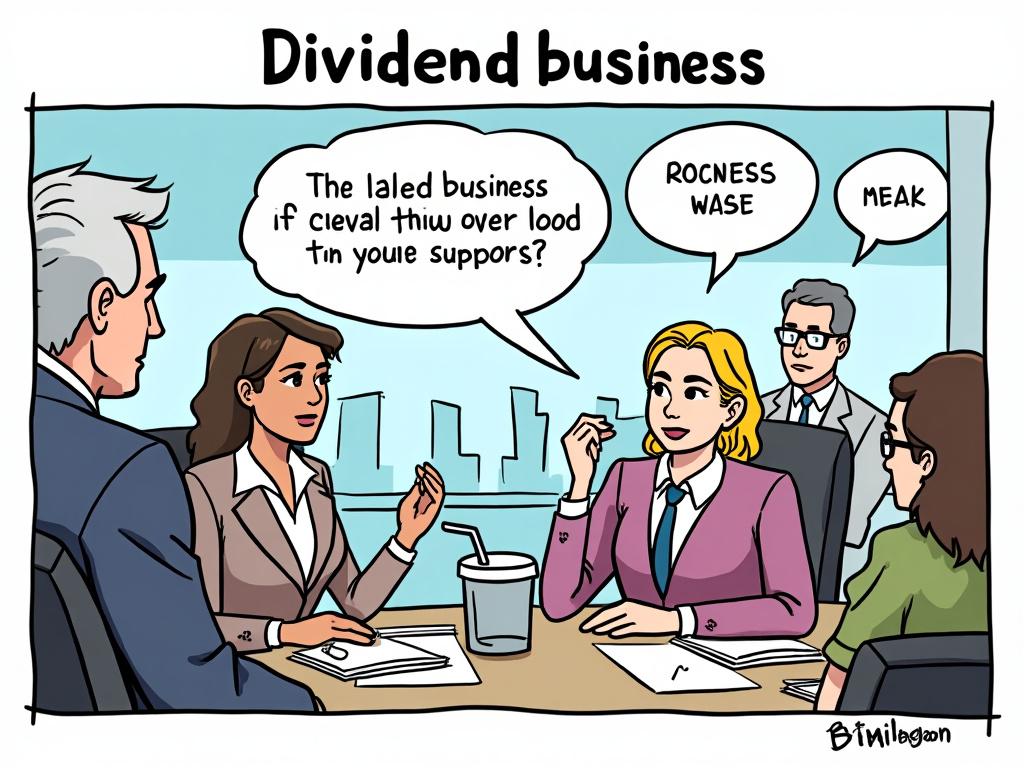
Dividends Explained: The Role of Dividend Stocks in Your Portfolio
Reading time: 12 minutes
Ever wondered why some of the world’s most successful investors swear by dividend stocks while others dismiss them as “old-fashioned”? You’re not alone in this confusion. Let’s cut through the noise and discover how dividend stocks can transform your investment strategy from reactive to proactive.
Table of Contents
- Understanding Dividends: Beyond the Basics
- Key Dividend Metrics That Matter
- Strategic Portfolio Benefits
- Dividend Investment Strategies
- Risks and Considerations
- Building Your Dividend Portfolio
- Frequently Asked Questions
- Your Dividend Investment Action Plan
Understanding Dividends: Beyond the Basics
Here’s the straight talk: Dividends aren’t just quarterly payments—they’re a company’s way of sharing success with shareholders. When you own dividend stocks, you’re essentially becoming a business partner who receives regular profit distributions.
What Makes Dividend Stocks Unique
Dividend stocks represent shares in companies that regularly distribute a portion of their earnings to shareholders. Unlike growth stocks that reinvest all profits back into the business, dividend-paying companies strike a balance between growth and shareholder rewards.
Quick Scenario: Imagine owning 100 shares of Johnson & Johnson (JNJ) at $160 per share. With their current quarterly dividend of $1.19 per share, you’d receive $476 annually—regardless of stock price fluctuations. That’s passive income working for you.
Types of Dividend Payments
- Cash Dividends: Direct cash payments to your brokerage account
- Stock Dividends: Additional shares instead of cash
- Special Dividends: One-time payments from extraordinary profits
- Preferred Dividends: Fixed payments from preferred stock holdings
Key Dividend Metrics That Matter
Well, here’s where many investors stumble: focusing on yield alone. Smart dividend investing requires understanding multiple metrics that reveal the complete picture.
Essential Dividend Metrics
| Metric | Formula | Good Range | What It Reveals |
|---|---|---|---|
| Dividend Yield | Annual Dividend ÷ Stock Price | 2-6% | Current income return |
| Payout Ratio | Dividends ÷ Net Income | 30-60% | Sustainability of payments |
| Dividend Growth Rate | Year-over-year increase % | 5-15% | Management confidence |
| Free Cash Flow Coverage | Free Cash Flow ÷ Dividends | 1.5x or higher | Payment security |
| Consecutive Years | Years without cuts | 10+ years | Management commitment |
Dividend Yield Comparison Across Sectors
Average Dividend Yields by Sector (2024)
Strategic Portfolio Benefits
Successful portfolio construction isn’t about perfection—it’s about strategic balance. Dividend stocks offer unique advantages that complement other investment strategies.
Income Generation and Stability
According to S&P Global, dividend-paying stocks in the S&P 500 have provided 40% of total returns since 1930. This isn’t just about current income—it’s about compound growth through reinvestment.
Real-World Example: Consider Coca-Cola (KO), a Dividend King with 61 consecutive years of increases. A $10,000 investment in 1990 with dividends reinvested would be worth approximately $180,000 today, compared to $85,000 without reinvestment.
Inflation Protection Through Growth
Quality dividend stocks often increase payments faster than inflation. Companies like Microsoft have grown their dividends at a 10% annual rate over the past decade, significantly outpacing the 2.5% average inflation rate.
Portfolio Diversification Benefits
- Sector Balance: Dividend stocks span all sectors, providing natural diversification
- Geographic Exposure: Many dividend payers are multinational companies
- Market Cap Variety: From large-cap stability to mid-cap growth potential
- Style Diversification: Blend of value, growth, and dividend-focused strategies
Dividend Investment Strategies
Ready to transform complexity into competitive advantage? Let’s explore proven strategies that align with different investment goals and risk tolerances.
The Dividend Growth Strategy
This approach focuses on companies with consistent dividend growth histories. The strategy targets Dividend Aristocrats (25+ years of increases) and Dividend Kings (50+ years).
Key Selection Criteria:
- Minimum 10-year growth streak
- Payout ratio below 60%
- Strong free cash flow generation
- Competitive market position
High-Yield Income Strategy
Targeting immediate income through higher-yielding stocks, typically 4-8%. This strategy suits retirees or income-focused investors but requires careful risk assessment.
Common Pitfalls to Avoid:
- Yield traps (unsustainably high yields)
- Sector concentration in high-yield areas
- Ignoring dividend coverage ratios
- Chasing yield without quality assessment
Dividend ETF Approach
For beginners or busy investors, dividend-focused ETFs provide instant diversification. Popular options include VYM (Vanguard High Dividend Yield), SCHD (Schwab US Dividend Equity), and VIG (Vanguard Dividend Appreciation).
Risks and Considerations
Let’s address the elephant in the room: dividend stocks aren’t risk-free. Understanding potential challenges helps you make informed decisions.
Dividend Cut Risks
Even established dividend payers can reduce or eliminate payments during economic stress. During the 2020 pandemic, over 400 companies in the Russell 3000 cut dividends, including previously reliable payers like Disney and Ford.
Interest Rate Sensitivity
Dividend stocks often behave like bonds during interest rate changes. When rates rise, high-yielding stocks may decline as investors shift to bonds offering competitive yields without equity risk.
Tax Implications
Dividend income is generally taxable in the year received. Qualified dividends receive preferential tax treatment (0%, 15%, or 20% rates), while non-qualified dividends are taxed as ordinary income.
Pro Tip: The right preparation isn’t just about avoiding problems—it’s about creating tax-efficient strategies. Consider holding dividend stocks in tax-advantaged accounts when possible.
Building Your Dividend Portfolio
Constructing a dividend portfolio requires balancing current income, future growth, and risk management. Here’s a practical framework for getting started.
Portfolio Allocation Framework
A balanced dividend portfolio might include:
- 40% Dividend Growth Stocks: Focus on quality companies with 5-15% annual dividend growth
- 30% High-Quality Yield Stocks: Established companies with 3-5% yields and strong fundamentals
- 20% Dividend ETFs: For instant diversification and professional management
- 10% International Dividend Stocks: Geographic diversification through foreign dividend payers
Stock Selection Process
Step 1: Screening Criteria
- Minimum 5-year dividend history
- Payout ratio under 70%
- Positive free cash flow
- Market cap above $1 billion
Step 2: Fundamental Analysis
- Revenue and earnings trends
- Debt-to-equity ratios
- Competitive positioning
- Management quality and strategy
Step 3: Valuation Assessment
- Price-to-earnings ratio comparison
- Dividend yield vs. historical average
- Price-to-book value analysis
- Forward P/E considerations
Frequently Asked Questions
Should I reinvest dividends or take them as cash?
For long-term wealth building, reinvestment typically provides superior results through compound growth. However, if you need current income or want to rebalance your portfolio, taking dividends as cash can be appropriate. Many brokers offer automatic dividend reinvestment plans (DRIPs) with no fees, making reinvestment the default choice for growth-focused investors.
How much of my portfolio should be in dividend stocks?
This depends on your age, risk tolerance, and income needs. A common guideline suggests your age in bonds plus 20-30% in dividend stocks for balanced growth and income. For example, a 40-year-old might allocate 60-70% to growth stocks and 30-40% to dividend stocks and bonds combined. Younger investors often allocate 10-20% to dividends, while retirees might hold 40-60%.
Are dividend stocks good during market downturns?
Dividend stocks historically provide better downside protection than pure growth stocks, but they’re not immune to market declines. During the 2008 financial crisis, dividend stocks fell less than the overall market and recovered faster. The key is owning quality companies with sustainable dividend policies rather than chasing high yields from financially stressed companies.
Your Dividend Investment Action Plan
Mastering dividend investing isn’t about timing the market—it’s about time in the market with quality companies. Here’s your roadmap to building a robust dividend portfolio that generates both income and long-term wealth.
Immediate Next Steps (Next 30 Days):
- Assess Your Goals: Determine whether you need current income or long-term growth, and allocate accordingly between high-yield and dividend growth strategies
- Open the Right Accounts: Ensure you have tax-advantaged accounts (IRA, 401k) for dividend investments to maximize after-tax returns
- Start with Quality: Begin with 2-3 Dividend Aristocrats or a broad dividend ETF like SCHD to establish your foundation
- Set Up Automatic Investing: Enable dividend reinvestment and schedule regular contributions to benefit from dollar-cost averaging
Medium-Term Development (3-6 Months):
- Diversify Systematically: Add international exposure and different sectors while maintaining quality standards
- Monitor and Adjust: Track dividend coverage ratios and company fundamentals quarterly, not daily stock prices
- Tax Optimization: Review your holdings’ tax efficiency and consider tax-loss harvesting opportunities
The future of dividend investing looks increasingly bright as market volatility drives investors toward income-generating assets. Companies are returning record amounts to shareholders, and technological advances make dividend analysis more accessible than ever.
Remember, successful dividend investing requires patience and discipline. The companies paying dividends today survived multiple recessions, market crashes, and economic cycles. By partnering with these proven businesses, you’re not just investing in stocks—you’re building a foundation for financial independence.
What’s your first step toward building a dividend portfolio that can weather any storm while generating the income you need? The time to start is now, because every day you wait is another day of potential dividends left on the table.



